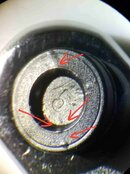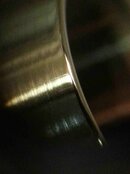I was presuming she had the rounded piston and the black Mk 25 seat, since she said 10+.
Maybe take that Olympus and not only check the rounded piston edge (they often have a little pitting which responds to a little Micromesh), but also check that seat a second time. I had a Mk10+ creep problem which turned out to be an imperfection in a completely new seat.

Cycling the reg with quick small breaths on the second stage a few hundred times, and leaving it pressurized for several days can also help. If you're worried about it creeping to dangerous levels while you're asleep, just pressurize it and turn the tank off. If it pops off the second stage from excessive IP during the night, or there's an ongoing tiny leak, it'll just drain the residual pressure in the hose and you'll see things at some low pressure in the morning.
Finally, don't forget to consider switching out that HP shaft oring. A late creep may be good initial sealing, and then molecules slipping past a flaw as Christolube shifts on a microscopic level.
But the most common fix for me has been spinning the piston on a 5/32" hex key as I let the sealing edge rest on a constantly changing angle of varying grades of Micromesh, from 3600-8000 grit. Get that polished up, while retaining the rounded edge, and it should seal without a creep. (Doing a true knife edge is a bit more of a challenge)

Unless the problem is a scratch in the oring land for the HP seat, which is unrecoverable, then the creep HAS to be one of those other three.
But as that bulletin that
@couv posted shows, the Mark 10+ was the genesis for Rene Dupré's comments at Service seminars thereafter, that all Scubapro regs are allowed 8psi of creep in the first 45 sec. Maybe after some cycling, and matchup between your piston and the new seat, this'll all settle down within spec. It's a frustrating process, rebuilding a reg for the fourth time, as you work through each of the possibilities. Fingers crossed!





